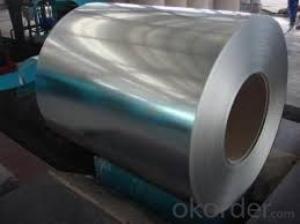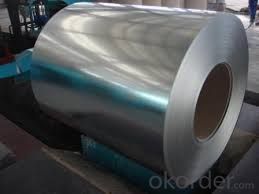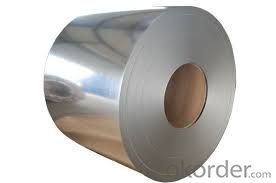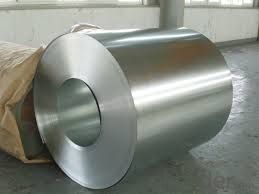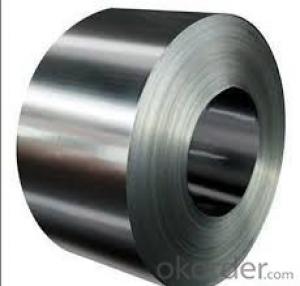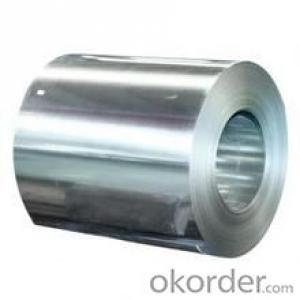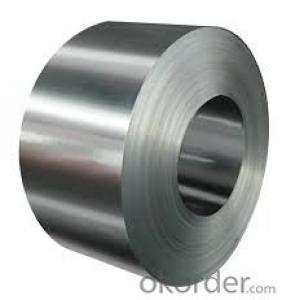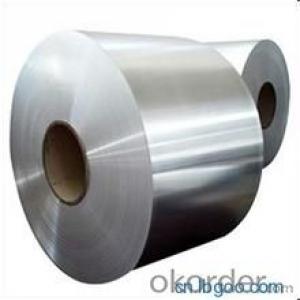Cold Rolled Steel/ Steel Rolled different size
- Loading Port:
- Shanghai
- Payment Terms:
- TT OR LC
- Min Order Qty:
- 20 m.t.
- Supply Capability:
- 10000 m.t./month
OKorder Service Pledge
OKorder Financial Service
You Might Also Like
Product Description
Brief Introduction
The Cold Rolled Steel is steel that has been worked below its recrystallization temperature by passing it between a pair of rollers. Recrystallization temperature is the temperature at which grains in the lattice structure of the metal have been rearranged, leaving it free of strain and deformations. The Cold Rolled Steel is pre-treated before being cold rolled with a process known as pickling, which uses strong acids to remove scale and other impurities. The Cold Rolled Steel is then passed through rollers to reduce its thickness. Most cold rolling takes place in multiple passes and as the size of the Cold Rolled Steel is further reduced, its strength and hardness both increase, but its ductility decreases. After cold rolling, heating the metal up in a process known as annealing can restore some of its ductility. The final Cold Rolled Steel may be manufactured in the form of sheets, strips, bars, or other forms.
Specification
1. Thickness: 0.4-2.0mm
2. Width: 900-1250mm
3. Inner Diameter: 508mm
4. Weight of Steel Coil: 3-15MT
5. Heat Treatment: Annealed
6. Margin Status: EC & EM
7. Surface Quality: FB&FC
8. Surface Status: SB & SD
9. Surface Treatment: Oiling
Mechanical Properties
1. Yield Strength: ≤ 320MPa
2. Tensile Strength: ≤ 370MPa
3. Elongation (L=50mm, b=25mm) When:
(1) Nominal Thickness<0.25mm: 30%
(2) Nominal Thickness 0.25mm-<0.40: 32%
(3) Nominal Thickness 0.40-<0.60mm: 34%
(4) Nominal Thickness 0.60-<1.0mm: 36%
(5) Nominal Thickness 1.0-<1.6mm: 37%
(6) Nominal Thickness >1.6mm: 38%
Packing
We use Seaworthy Package to make sure Cold Rolled Steel is well-protected during the long ocean voyage.
Application
1. Base metal for coated and dipped products.
2. Home appliance
3. Precise welding tube
4. Flux cored welding wire
5. Bicycle, battery shell,
6. Automobile fitting, hardware
7. Enameling industry etc.
Superiority
1. High precision of dimensional tolerance
2. Excellent mechanical property such as the yield strength and tensile strength, etc.
3. Being highly resistant to denting
4. Exhibits useful magnetic properties
5. High quality surface finish and get well prepared for the surface coating
6. Available in a variety of sizes and shapes with characteristics useful in a wide range of applications
Chemical Components
| Grade | Chemical Components | ||||
| C | Mn | P | S | Alt | |
| DC01 | ≤0.12 | ≤0.50 | ≤0.035 | ≤0.025 | ≥0.020 |
| DC03 | ≤0.10 | ≤0.45 | ≤0.030 | ≤0.025 | ≥0.020 |
| DC04 | ≤0.08 | ≤0.40 | ≤0.025 | ≤0.020 | ≥0.020 |
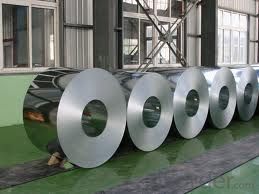
FAQ
1. Do you have QC team?
Yeah, sure, our QC team is very important, they will keep the quality control for our products.for quality inspection every day.
- Q: What are the environmental considerations when using steel coils?
- Some of the key environmental considerations when using steel coils include the production process, energy consumption, and the potential for waste generation. Steel production is resource-intensive and can result in high greenhouse gas emissions, contributing to climate change. Energy consumption during manufacturing and transportation should be minimized to reduce carbon footprints. Additionally, proper waste management and recycling practices should be implemented to minimize the environmental impact of steel coil usage.
- Q: I'm planning to buy a pair of Doc Marten boots but I want some steel toed ones. I don't know if all of them are steel toed, or only some of them, or what?
- Steel Toe Doc Martens
- Q: What are the dimensions of steel coils used in the storage tank industry?
- Steel coils used in the storage tank industry come in various dimensions, depending on the specific requirements of the tank being manufactured. Generally, these coils are available in different sizes and thicknesses. The width of the steel coils can range from approximately 600 millimeters to 2,400 millimeters. Similarly, the length can vary from a few meters to tens of meters. The thickness of the coils can also differ, typically ranging from 1.5 millimeters to 10 millimeters or more. Factors such as the size and capacity of the storage tank, the material being stored, and the structural requirements of the tank determine these dimensions. Consequently, the tank manufacturer or designer would determine the specific dimensions for a given storage tank project, following industry standards and project specifications.
- Q: How are steel coils inspected for thickness and width accuracy?
- Steel coils are inspected for thickness and width accuracy using non-destructive testing methods such as ultrasonic testing and laser measurement systems. Ultrasonic testing involves sending high-frequency sound waves through the coil, and by analyzing the reflected waves, the thickness of the steel can be determined. Laser measurement systems use lasers to scan the width of the coil, providing precise measurements. These inspection methods help ensure that steel coils meet the required thickness and width specifications.
- Q: If you were selecting a tool steel for an extreme impact load application, which one would you pick? why?thanks
- It all depends what the application actually is. For hammers I would select a hammer grade B1 steel. For impact loading where an edge is needed I would be going for O1 or similar (oil quenching steels tend to be a little tougher than air hardening). For mining tools a very high manganese steel (Hadfields steel) - this is not a true tool steel. The best place to start is by looking at the ranking of the properties which you want - hardness v toughness v strength - and then use this to put the steels in rank order. Price and availablity then sort the problem out for you (in the real world).
- Q: How are steel coils transported?
- Steel coils are typically transported using specialized flatbed trucks or railcars. The coils are carefully loaded onto these vehicles and secured using straps or chains to prevent any movement during transit. In some cases, shipping containers are also used to transport steel coils via cargo ships.
- Q: How are steel coils annealed for improved properties?
- Steel coils are annealed for improved properties through a process called annealing. This involves heating the steel coils to a specific temperature and then slowly cooling them to relieve internal stresses and create a more uniform and refined grain structure. This annealing process helps improve the steel's ductility, hardness, and overall strength, making it more suitable for various applications.
- Q: How do we use steel ?plesase answer, its for homework xxx
- Iron and steel are used widely in the construction of roads, railways, infrastructure, and buildings. Most large modern structures, such as stadiums and skyscrapers, bridges, and airports, are supported by a steel skeleton. Even those with a concrete structure will employ steel for reinforcing. In addition to widespread use in major appliances and cars steel is used in a variety of other construction-related applications, such as bolts, nails, and screws.Other common applications include shipbuilding, pipeline transport, mining, aerospace, white goods, office furniture, steel wool, tools, and armour in the form of personal vests or vehicle armour.
- Q: I am building a robot for Bots IQ. In doing so i have the option of building the the armor of my robot out of titanium or tool steel.. which would be the better option.Brief description of Bots IQ: It is a competition where 2 15lb robots go and attack each other with spinning blades, hammers or whatever is designed.
- I would have to say titanium , but in doing so I am having to assume you have access to some very serious machinery.This is because Ti is extremely difficult to work and also work hardens, which could lead to cracking and failure.The other problem is that Ti is also very hard to weld .It seems tool steel is the choice for ease of working and weldability, so unless you can buy the bits you need precut or made then I'd say tool steel,preferably something along the lines of ramax.Your other option is spring steel as this is workable and gets hardened after shaping.
- Q: What are the common surface treatments for galvanized steel coils?
- The common surface treatments for galvanized steel coils include passivation, chromate coating, and oiling. Passivation is a process where a thin layer of protective material, such as zinc phosphate or chromate, is applied onto the galvanized steel surface. This layer helps to enhance the corrosion resistance of the steel by providing a barrier against moisture and atmospheric elements. Passivation also improves the adhesion of subsequent coatings or paints that may be applied to the steel. Chromate coating, also known as chromating or chromate conversion coating, involves the application of a thin layer of chromate onto the galvanized steel surface. This coating provides an additional layer of protection against corrosion and improves the appearance of the steel. Chromate coatings can be clear or colored, depending on the desired aesthetic. Oiling is another common surface treatment for galvanized steel coils. This involves the application of a thin layer of oil onto the surface of the steel, which helps to prevent the formation of rust and corrosion during storage and transportation. Oiling also provides temporary protection against moisture and other environmental factors until the steel is further processed or used in its final application. These surface treatments are commonly used to enhance the performance, durability, and appearance of galvanized steel coils, ensuring that they can withstand harsh conditions and maintain their quality over time.
Send your message to us
Cold Rolled Steel/ Steel Rolled different size
- Loading Port:
- Shanghai
- Payment Terms:
- TT OR LC
- Min Order Qty:
- 20 m.t.
- Supply Capability:
- 10000 m.t./month
OKorder Service Pledge
OKorder Financial Service
Similar products
Hot products
Hot Searches
Related keywords
